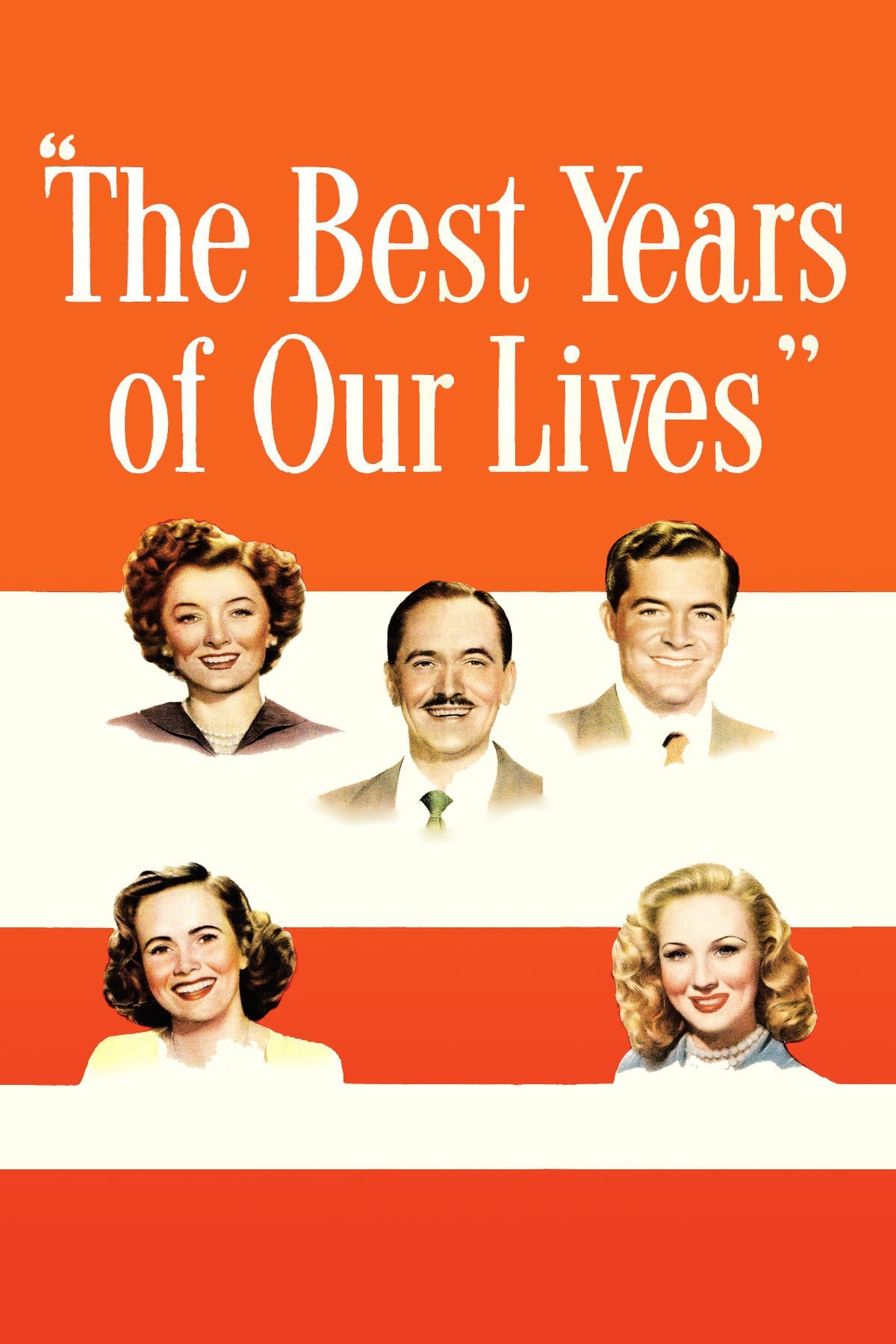
It's the hope that sustains the spirit of every GI: the dream of the day when he will finally return home. For three WWII veterans, the day has arrived. But for each man, the dream is about to become a nightmare.
14 Jul Best Years of Our Lives (1946)
Slow Meditation on Observation
This treacly story hides some masterful filmmaking.
Film is all about observation, except the observed usually contrive to make the observer feel unobtrusive.
During this period, intelligent filmmakers were playing with the form so that often films were not only engineered observations but the matter of the movie itself was about observation.
In this case, we have two acts. The first act introduces our three returning guys: one each Air Corps, Army and Navy; one each enlisted, non-com and officer; and — so far as the conventions would allow — from three different social strata. The central scene in this act is them observing the world (and particularly the everycity Boone City) from the nose of a B-17. It is then mirrored by the observations from the cab.
Then we enter the film proper which is about three women as observers of these men. We observe a story about three women observing their stories. As the men are equally spaced, so are the observers. Each woman is a different type of observer:
We have the quietly engaged observer (Milly), who appears to simply sit by, but who actually influences the action; the passive observer (Peggy) who forces the action to come to her as most movies do. That final scene where Fred watches her watching and them goes over is classic. And we have the Orson Welles type (Wilma) who actively engages in the action, driving the story and literally becoming its hands.
I’m usually not a William Wyler fan. His “Dodsworth” was a real trial. He had worked with Gregg Toland a half dozen times before, but here is the first collaboration since “Citizen Kane”. Toland by this time knew how to manage narrative within the staging. There’s a really fine scene for instance where the wonderful Butch and Homer (catch the name) are playing piano. Al is in the foreground and splits his time glancing back at Fred on the phone. This particular scene was the template for the opening of “The Color of Money” where Paul Newman is well into a complicated sell job with a barmaid but listens to Tom Cruise cracking balls behind him.
The staging is helped by having all the sets smaller than normal so the people pop out.
A side note: you might want to visit Tucson some day. There are thousands upon thousands of obsolete — and some not — warplanes parked out there in the desert. It is a sobering experience, that.
Posted in 2004
Ted’s Evaluation — 2 of 3: Has some interesting elements.


No Comments